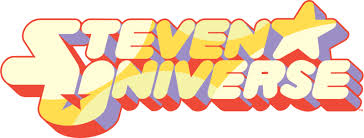

Yes, adult TV shows and thought-provoking movies are absolutely fantastic, but occasionally it’s good to kick back with some good, nostalgia-inducing children’s television. Over the summer, I began watching two TV shows that have achieved significant popularity not only among their targeted demographic (actual children), but also among many cartoon-loving adults — and for completely legitimate reasons. Cartoon Network’s “Steven Universe” and Disney Channel’s “Gravity Falls” are some of the best shows out there right now, whether adults or children watch them. Both programs emphasize positive relationships, engaging plotlines and quality art direction.
Let’s begin with a brief overview of both series. “Steven Universe” focuses on the eponymous character — an excitable and energetic boy — and his adventures with his three alien caretaker-mothers known as the “Crystal Gems.” Garnet, Amethyst and Pearl watch over Steven after the loss of his biological mother and protect Earth from extraterrestrial invaders. “Gravity Falls” follows twins Dipper and Mabel Pines after they get sent off to live with their eccentric granduncle Stan. They live in a sleepy, small town in the Oregon woods called “Gravity Falls.”
“Steven Universe” boasts more than 100 10-minute episodes that include both cheerful subject matter and dramatic, tragic moments. The main conflict arises among the Earth-dwelling Crystal Gems, Steven and the gems from the Homeworld — the alien planet where the Crystal Gems came from. The plot develops slowly and calmly, just like the show’s events. The 10-minute episodes do not give much room for prolonged development and give a more episodic look at to the characters’ squabbles. While the visuals are absolutely beautiful (I could spend hours looking at the backgrounds alone), the characters’ lack of motion leaves them hanging on the page like sock puppets without a hand to provide the movement. The dialogue, though clever, does not require consistent attention. I find that simply watching “Steven Universe” while doing other things, like cleaning the house, provides pleasant background noise. When I try to focus on it, my attention begins to wane.
The series is notable in a several ways: It is Cartoon Network’s first series created by a woman, Rebecca Sugar, an “Adventure Time” veteran. The show’s protagonist, Steven, is based off her own brother — Steven Sugar. Secondly, part of the show’s charm stems from the series’ production. The show is created by “storyboarders” rather than writers, leading to incredibly innovative art direction and visually arresting animation, laced with soft round shapes, pinks and purples and anime-esque action sequences. However, the lack of a writer’s supervision leads to occasionally weak and off-beat dialogue, especially in the early episodes of the show. “Steven Universe” is incredibly progressive. The show’s main cast is completely female, save for Steven and his doting father, Greg. The show positively portrays gay relationships between female-identifying characters, specifically Ruby and Sapphire. Their glowing love for each other is a definite highlight of the show. A couple of non-binary characters appear and are treated with absolute respect; male characters with stereotypically female interests are accepted, not ridiculed as they are in most shows. It’s a breath of fresh air and a relief to know that kids are watching and learning from shows like this.
And then there’s “Gravity Falls.” The show feels like a cross between “Phineas and Ferb,” “Twin Peaks” and “X-Files,” but none of that is as important as the central relationship between the show’s main characters, the Pines twins. Dipper and Mabel are incredibly supportive of one another, playfully bickering and moving together as one unit until splitting apart into two remarkably different individuals. Any other Disney show would have siblings constantly sabotaging each other, but the healthy dynamic established by the Pines twins lends the show a completely different feel than the network’s other shows. The series, according to creator Alex Hirsch, was based upon the tiring and boring summers he and his twin sister, Ariel, had in their relatives’ small towns. The first season tries to correct those boring summers with a mysterious journal that Dipper finds in the woods. All of a sudden, the twins’ lives are filled with supernatural enemies, an interesting assortment of ignorant townsfolk and a strange great uncle. The Pines twins are afforded the fun and exciting summer that the Hirsch twins never enjoyed. The show is a suspenseful ride, and it’s worth watching the 20-some episodes of the two seasons.
What makes these creepy, supernatural elements work is the lack of complete mature-level horror. A children’s show cannot adopt the cheap scare tactics that are so effective in adult horror movies, so the creative team compensates with actual quality: beautiful art direction, clever dialogue, nightmarish creatures rather than gory scenes and plotlines with enough clues to keep fans eagerly awaiting the next episode.
Out of the two, “Gravity Falls” is definitely the stronger and more engaging show, simply because of its higher-quality production and suspenseful tone. That does not leave “Steven Universe” without its merits, especially because of its progressive characters and stylized visuals. Both shows are great reminders of what it’s like to run home after school and watch cartoons before doing homework. It’s a return to the simplicity of childhood, and boy, sometimes we need that.